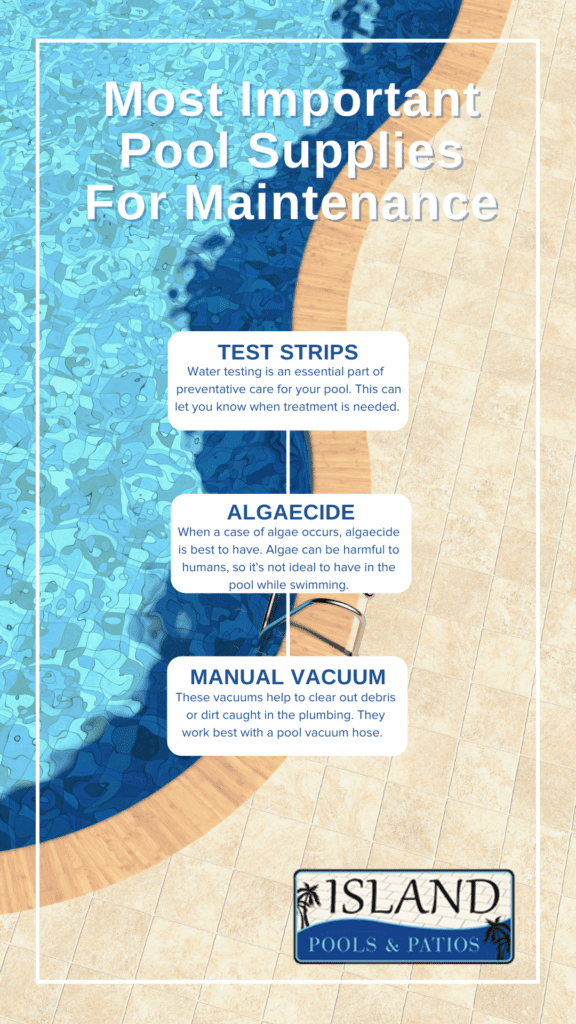Throughout the year, taking proper care of your pool is essential in order for it to be ready come the summer. Even when it is not being used, there are best practices to follow that can help maintain safe plumbing and a good-looking pool. One thing to keep in mind is that the weather is a large factor in how to take care of your pool, as it varies seasonally. Let’s take a look at some of the best pool maintenance practices.
Preventative Measures
In Wildwood and the surrounding areas, being prepared for any everyday pool concern starts with having the right pool supplies. The appropriate pieces of equipment will help determine what issues you may be facing with your inground pool and may even help address them.

With these tools and more, you can implement best practices to preserve a quality pool.
Common Maintenance Practices
Just like your car requires gas to be fueled, your pool needs a couple of ingredients so you can swim in it safely. These “ingredients” include having the right balance of chemicals in your pool, such as chlorine. On top of that, more natural elements should be checked and adjusted as needed to keep the pool safe. By staying on top of these practices regularly, more significant concerns can be avoided.
Having Safe Water
On a consistent basis, the water levels should be checked. By this, we mean the water chemistry. Test kits will help determine if the pH or Alkaline levels are good, or if they need adjustments.
Keeping The Right Water Level
When using the pool frequently, the water levels may be fluctuating more than normal. More so, if there is an issue with the skimmer, it can cause bubbles in the water. To ensure your skimmer is not pulling in air, check that the water level is equivalent to the middle of the skimmer’s opening.
For more on best maintenance practices, click here.
Still Having Bubbles In Your Pool?
If the water level is good and regular maintenance is done, there are a couple of quick things to check.
- Make sure no debris has been caught in the filtration system by checking the weir to start. This is also known as the door or flap on the front of the skimmer.
- Take a look at the strainer lid. If there are any cracks on the lid or it is not closed tight, that can cause the bubbles. In most cases, it has to do with the O-ring inside.
- The O-ring inside may have cracks as well. This piece is most likely the cause if everything else has checked out; however, if it looks like it is dry-rotted or splitting, it should be replaced. When investigating this, always turn the pump off first and then remove the lid.
- Finally, the last thing to see is if the pool pump and valves are aligned correctly. This involves the plumbing more directly, so we recommend leaving it to our very own pool service company, Island Pools & Patios.
Professional Help
For any of your pool needs, whether it is some maintenance assistance or even renovations needed, our team of experienced professionals can handle it all. Contact us today!
